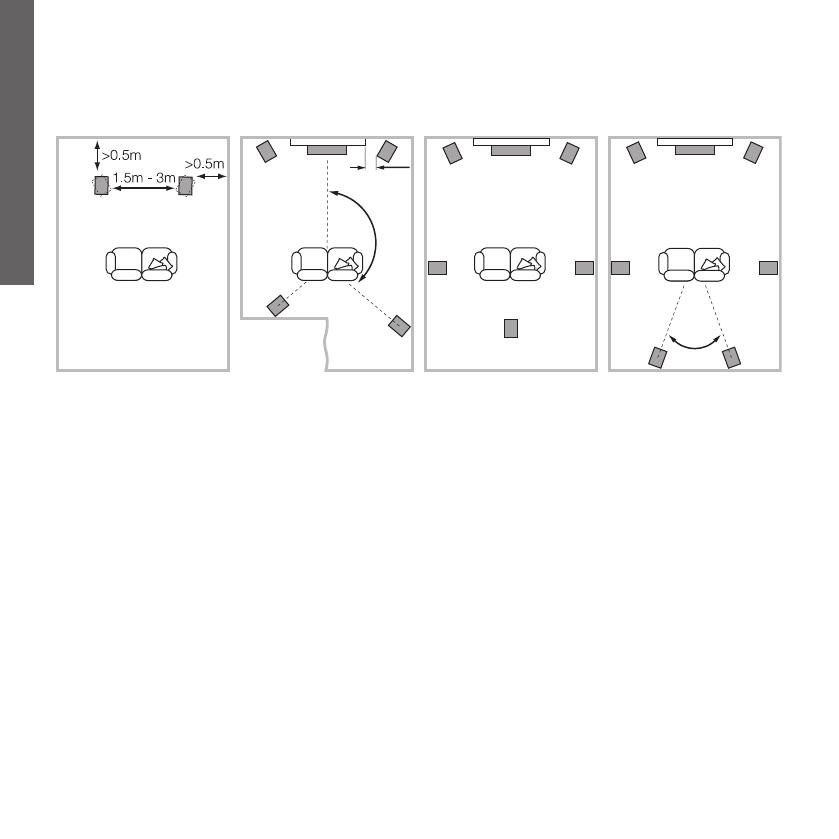
DEUTSCH
18
Positionieren der Lautsprecher
Die Position der Lautsprecher nach der Installation weiter zu
optimieren, kann zu einer Verbesserung der Klangqualität führen
und ist daher sinnvoll.
Versuchen Sie sowohl bei Stereo- als auch bei Heim kino-
installationen sicherzustellen, dass sich die direkte akustische
Umgebung aller Lautsprecher ähnelt. Bendet sich beispielsweise
ein Lautsprecher in der Nähe einer kahlen Wand, während der
andere von weichen Einrichtungsgegenständen und Vorhängen
umgeben ist, so leiden darunter die Klang qualität und das Stereo-
Klangbild.
Herkömmliche Stereosysteme
Zunächst sind die Lautsprecher in einem Abstand von 1,5 bis
3 m in zwei Ecken eines gleichseitigen Drei ecks zu platzieren,
das an der dritten Ecke durch den Hörbe reich vervollständigt
wird. Der Abstand zur Rück wand und zu den Seitenwänden
sollte mindestens 0,5 m betragen (siehe oben).
Heimkinosysteme
Werden die Lautsprecher für die Frontkanäle eines
Heimkinosystems genutzt, so sollten sie näher zusammengestellt
werden als bei 2-Kanal-Audio systemen, da die Surroundkanäle
zu einer Erwei te rung des Klangbildes führen. Eine Positionierung
der Lautsprecher innerhalb von ungefähr 0,5 m zu den Seiten
des Bildschirms ist darüber hinaus sehr hilf reich, um das
Klangbild optimal an das visuelle Bild anzupassen. Wie bei
der Positionierung in konven tionellen Stereosystemen sollten
die Lautsprecher einen Ab stand von ungefähr 0,5 m von der
Rückwand haben und einen Mindestabstand von 0,5 m zu den
Seiten wänden. Sollen die Lautsprecher an die Rück wand gestellt
werden und führt dies zu einem zu starken Bass, so erhalten Sie
unter „Feinabstimmung” in dieser Bedienungsanleitung Hinweise
zur Nutzung der Schaumstoffeinsätze.
Magnetische Streufelder
Die Lautsprecherchassis erzeugen ein magnetisches
Streufeld, das über die Gehäusegrenzen hinaus reicht. Daher
empfehlen wir, einen Mindestabstand von 0,5 m zwischen
magnetisch empndlichen Artikeln (CRT-Fernsehgeräten,
Computerbildschirmen, Discs, Audio- und Videobändern,
Scheckkarten usw.) und Lautspre cher zu bewahren. LCD-,
OLED- und Plasma-Bild schirme werden von magnetischen
Streufeldern nicht beeinusst.
5.1 Channels 6.1 Channels 7.1 Channels
0.5m
110° - 130°
~40°
Stereo
683-684 S2 manual for printer_ALL.indb 18 20/05/2014 09:27





















